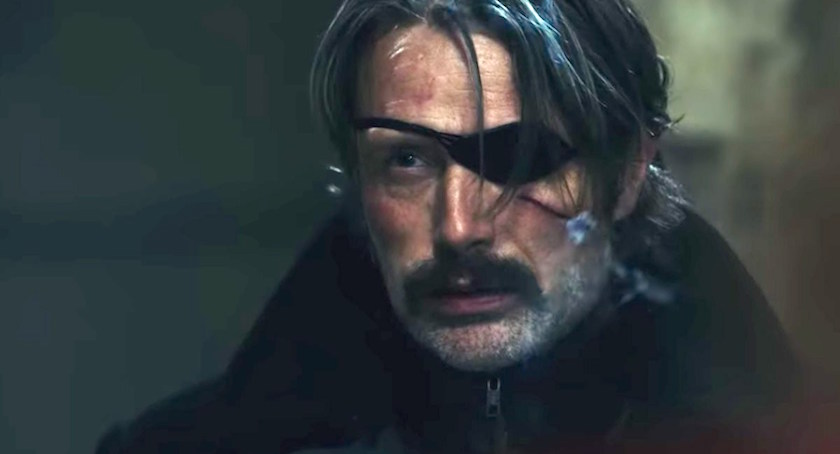Netflix’s hitman movie Polar is a sick and seedy adolescent fantasy

Netflix obviously wanted to replicate the success of John Wick, but with Polar they have an ugly and imbecilic film, says critic Luke Buckmaster.
There are several ways that directors can attempt to pass off grotesque films as creative statements rather than senseless gratuity. One is to drape a sadistic experience in high art veneer – like the revolting but moody Apostle, and the empty but stylish You Were Never Really Here. The latter, dressing up the cliché of the weary killer protecting the forlorn little girl in a chichi aesthetic, looked like it was supposed to mean something, thus the commentariat chimed in with turns of phrase that – like the film – implied meaning while actually saying very little. It was “gritty poetry”, for example, with “haunted wit.”
Another approach is to show some humour as the blood starts dripping, proving the filmmaker intended no harm in the first place. This is difficult because comedy is difficult. And, as demonstrated in the plodding Netflix hitman movie Polar, this approach can have a hollowing effect, making the comedy unfunny and the drama undramatic – so you can’t laugh at it and you can’t take it seriously. All that’s left in this instance is the sensation one experiences from watching something genuinely perverse. The brief was clearly to replicate the success of the memorable Keanu Reeves B movie John Wick, but the result is more C or D grade, boring and imbecilic.
Polar‘s opening scene has Johnny Knoxville being assassinated while receiving a blow job from a busty woman after gulping down an ecstasy pill, establishing the film as a work of social realism. It also introduces an odd relationship to comedy, which in the hands of director Jonas Åkerlund (adapting a Dark Horse graphic novel) is less about making people laugh than presenting an extremely childish view of violence, attempting Tarantino-esque playfulness but missing the mark by miles. Bouncy text inserts announce characters’ names as if they were brands of ice cream, and high contrast colour grading emphasises the cast’s horrifyingly gaudy costumes.

The story follows ageing assassin Duncan (Mads Mikkelsen) who attempts to dodge the retirement plan proposed by the syndicate he works for, which involves a bullet to the head. When we meet the plump main villain Blut (Matt Lucas) this odd fellow is clad in a bright yellow three piece suit with a maroon tie, matching tinted glasses and peroxide blond hair. Is he supposed to look like a day-glo coloured parody of Goldfinger, or supposed to look like an idiot? The bad guys in Polar appear to believe “villain” equals “fabulous dress up party”, lacking even a modicum of menace.
Åkerlund, meanwhile, appears certain that “pathos” equals “Mads Mikkelsen blowing up a red balloon while sitting on an armchair alone next to log fire.” And “irony” equals “Mads Mikkelsen doing knife training with primary school students below a sign reading LOVE YOUR NEIGHBOUR.”
Duncan has a dog, as if to remind us of the film’s spiritual connection to John Wick, whose beagle was famously and rather violently escorted to that great big kennel in the sky. Here the protagonist fills his own pooch with lead after waking up from a nightmare and instinctively reaching for his gun and firing it; not somebody you want to share a bunk bed with. Soon later the protagonist is shown feeding his fish, reminding us that Serial Killers Can Act Humanely. The extremely violent action scenes are staged blandly, the director’s only underlying passions being a lust for blood and a penchant for shots of various objects (meat skewers and electric drills, for example) entering people’s heads.
Polar is a seedy adolescent fantasy, feasting on grotesquery and even literalising the expression “tits to the glass.” The credits might as well have read “Directed by the male gaze.” Mads Mikkelsen, channelling the gruff mannerisms and nihilistic aura of late era Liam Neeson, can keep a cold straight face, but doesn’t come remotely close to saving an ugly and unimaginative experience. Both the actor and the film itself have the charisma of a dead fish. Could this be (mis)construed as “gritty poetry” or “haunted wit”? Not a chance.

















